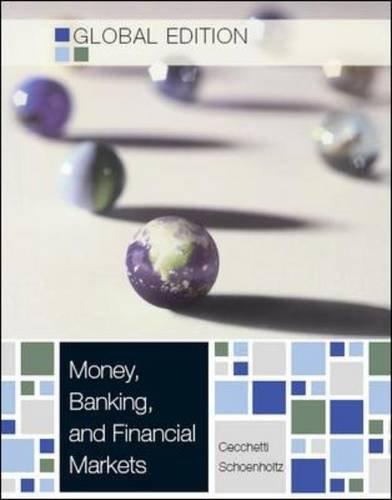Question
Consider a three-period binomial model with up factor u = 1.2, down factor d = 0.9, and initial stock price S0 = 100. In addition
Consider a three-period binomial model with up factor u = 1.2, down factor d = 0.9, and initial stock price S0 = 100. In addition to the stock, a risk-free bond is available with initial price A0 = 1 and periodic return r = 0.1.
a. (5) Calculate the risk-neutral probability that the stock price goes up in one period? In this model, consider an American call option with strike price K = 100 and expira-
tion date T = 3 periods.
First, assume that the stock pays no dividends. Hence, by the result of Q.4, this option is practically equivalent to a European call with the same strike price and expiration date.
b. (5) Calculate the price of this option at time zero. c. (5) Describe a hedging strategy for a short position in this option.
Now, assume that the stock pays a 10% dividend at the end of the second period. Hence, the stock prices at the corresponding nodes of the tree drop down by 10% right after the dividends are paid to the shareholders. Accordingly, the holder of the American call has three choices at such nodes: should she exercise the option right before the dividends are paid, should she exercise it right after the dividends are paid, or should she keep holding the option?
-
(5) Calculate the price of the American call at time zero. Is it ever optimal to exer- cise early this option?
-
(5) Do the prices in parts b and d match? Why?
Step by Step Solution
There are 3 Steps involved in it
Step: 1

Get Instant Access to Expert-Tailored Solutions
See step-by-step solutions with expert insights and AI powered tools for academic success
Step: 2

Step: 3

Ace Your Homework with AI
Get the answers you need in no time with our AI-driven, step-by-step assistance
Get Started


